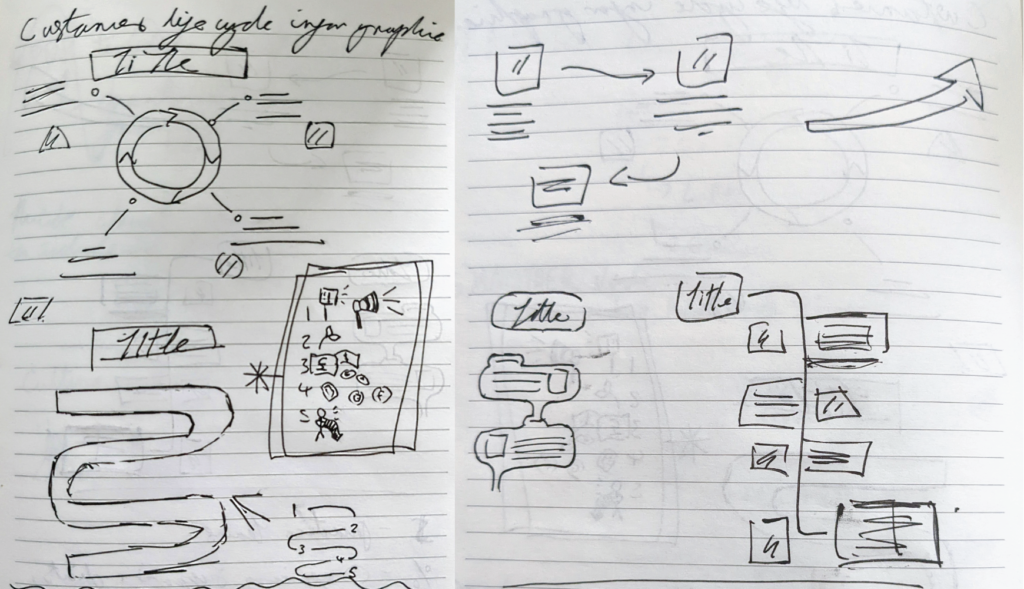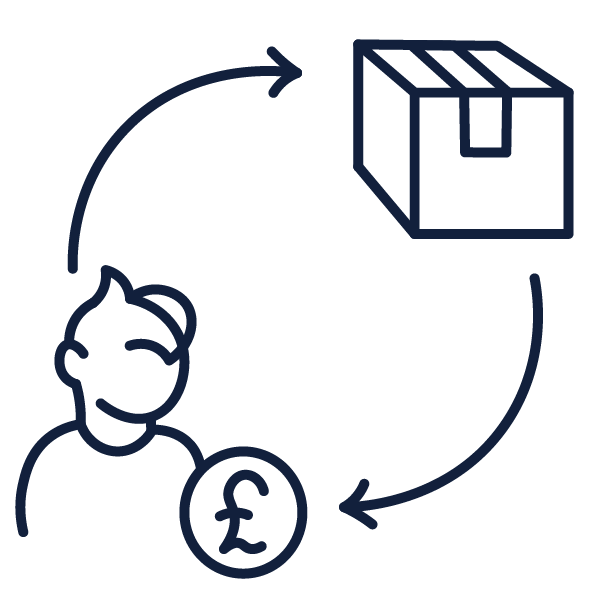What is a customer lifecycle?
A customer life cycle is a term that is used to describe the journey that your customer goes through when learning about your product, the consideration of purchasing the item/service, the transaction that happens and then the loyalty and relationship that you build with that customer.
The customer lifecycle is something that every business should consider. Whether it’s a bakery or a big tech company, it’s important to know how you fall into the customer lifecycle, and what you can possibly do to improve your relationships with your customers.
Why is it important to know?
When creating and managing your business, it is crucial for you to take into account what your target audience is and how you can best adapt your service or product to best suit this cycle so that you can have the best possible outcome for your business.
Awareness
The very first stage is cutting your potential customers aware and interested in your company’s service and/or product. This can be done through your standard marketing tools, such as Google Ads or if you’re in it for the long run, through your social media. This can also include when a customer’s need/wants becomes clear, leading them to search online activity.
Acquisition
This is the stage where you build your relationships with your potential customers. You can introduce signing up for an emailing list and subscribing to your social media. This is where a customer shows that they are starting to be interested in your business and this also means that they will be more receptive to the messaging that you provide.
Conversion
The customer knows what you offering and that it’s right for them, leading them to make a transaction. This is also a very important stage to stay diligent! The customer may want to ask questions so it’s important that they know where to contact you. The transaction must be as smooth as possible in order for them to leave happy.
Retention
After repeated purchases, a client/customer will have built loyalty to your brand. At this stage, they might be actively engaging with the content that you generate this can be via your website (like blogs), emails or your social media content. This will help retain their attention and make them more likely to purchase from you in the future.
Advocacy
Advocates are the customers that will recommend your business to others and may even defend your brand! This type of loyalty will help your business to increase sales and attract new potential customers. These are achieved by all of the other stages and should be cherished and nurtured.
Coursework
Brief
One of the briefs that I received for my coursework was to create an infographic that clearly maps out the journey that a customer takes when learning about a business to the last stage of advocacy. I wanted to make sure that my infographic would both be nice to look at and easy to read and navigate. To do this, I did a lot of research on what makes a good infographic and watched some videos and what made a great one. Here is a list of some that I did:
https://www.youtube.com/watch?v=uQXf_d5Mgjg
Planning and Progress

With the knowledge that I obtained from these, I went ahead and started my own by planning what writing I needed to be there and how I could possibly display it. I knew I wanted it to follow the brand of the company that I work for, even if it was just loosely, and that it was easy for viewers to navigate. So I started sketching out how I wanted it to flow, if I wanted to show it as a circle or if I wanted it to take you on a ‘journey’ down the page.
Once I was happy with the design and how it would flow, I wrote up all the content that I wanted to be on there and then moved on to the icons for each stage.
The first one was probably the hardest to come up with, I knew that it would have to find someone finding the business, but I wasn’t sure how to show it in a simple icon. In the end, after searching other infographics, I came up with someone sitting down and browsing on a laptop That way, I could have it simple and gives the point across.


The next was actually an icon that I specifically made for the company I work for, and I thought it was a good fit for this specific stage of acquisition, for it’s the stage where you start to build your relationships with your customer.
The third icon I knew would have to show some sort of transaction for this stage so I showed a person giving money and receiving a package. This also can show continuous purchases, which again is suiting in growing your relationship, which nicely leads you into the next stage of nurturing.


For the fourth stage, I wanted to show the growing relationship that you create, so I designed a simple representation of it with the sapling being held up by hands.
For the final stage, I settled on two people chatting, with one clearly leading the conversation, almost casually. I imagine regular customers would boast and share your brand regularly, or just even slip it into casual conversation.

The colours were easy enough to choose since I wanted them to stay ‘on brand’ and I knew it would still go with the feel of the graphic. The lines surrounding the icons help the viewers to navigate down the graphic, clearly showing a journey. The font is Century Gothic Bold for the titles and subheaders, and Karla for the main bulk of the writing.
Conclusion
In the end, I was quite happy with the result. I may one day revisit it and change some things, but I think for now it successfully portrays the journey of the customer life cycle. Before I submitted it, I checked in with my manager to give it a once over just to make sure that there were not any mistakes of grammar errors. The knowledge that I have gained both from what a customer lifecycle is and how to create a successful infographic will help me to better my work within the business in content and creative marketing. It has provided me with a way to convey a journey and a story to a viewer in a simple and easy-to-understand way effectively.
